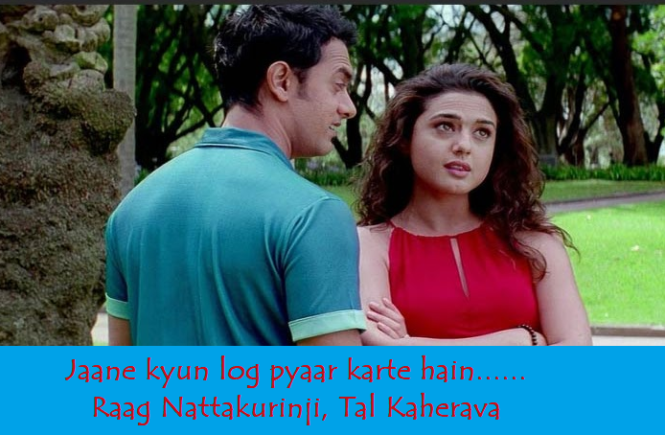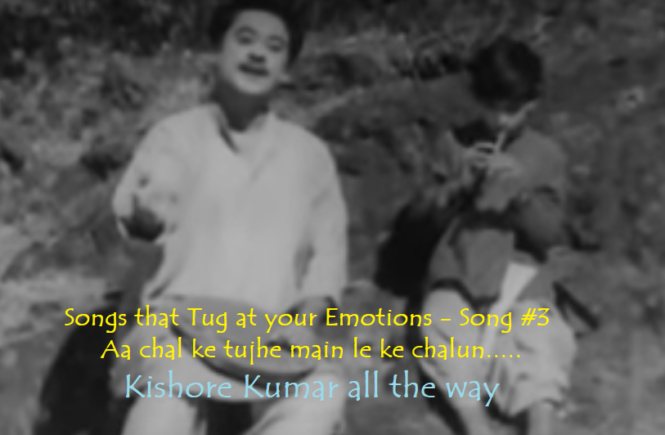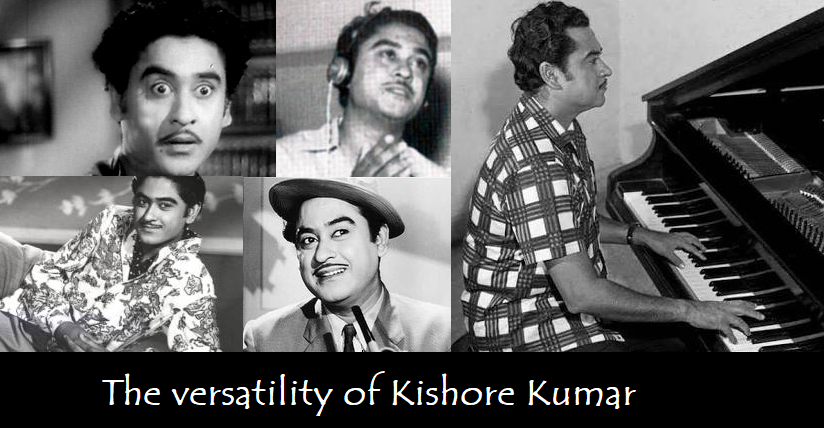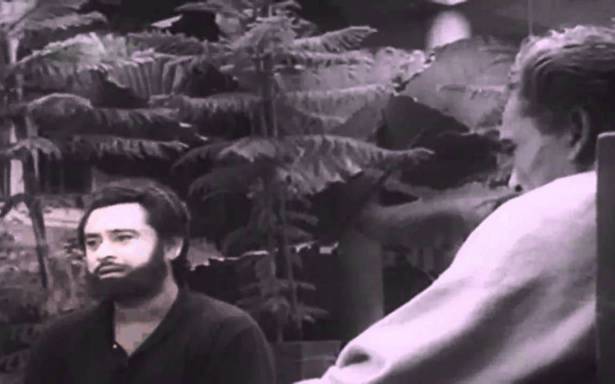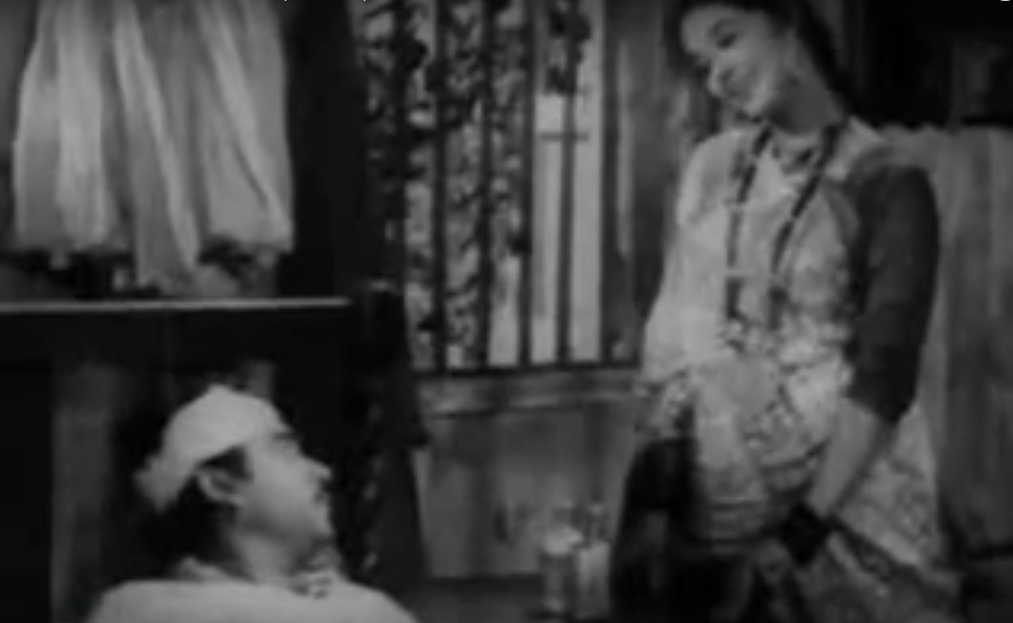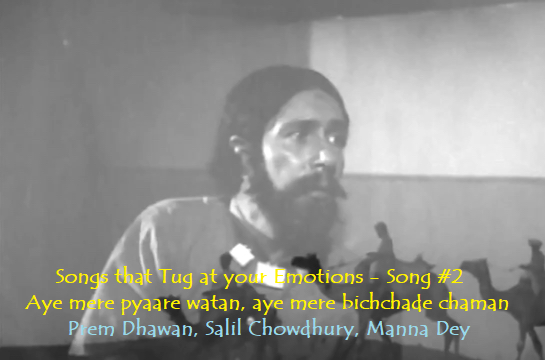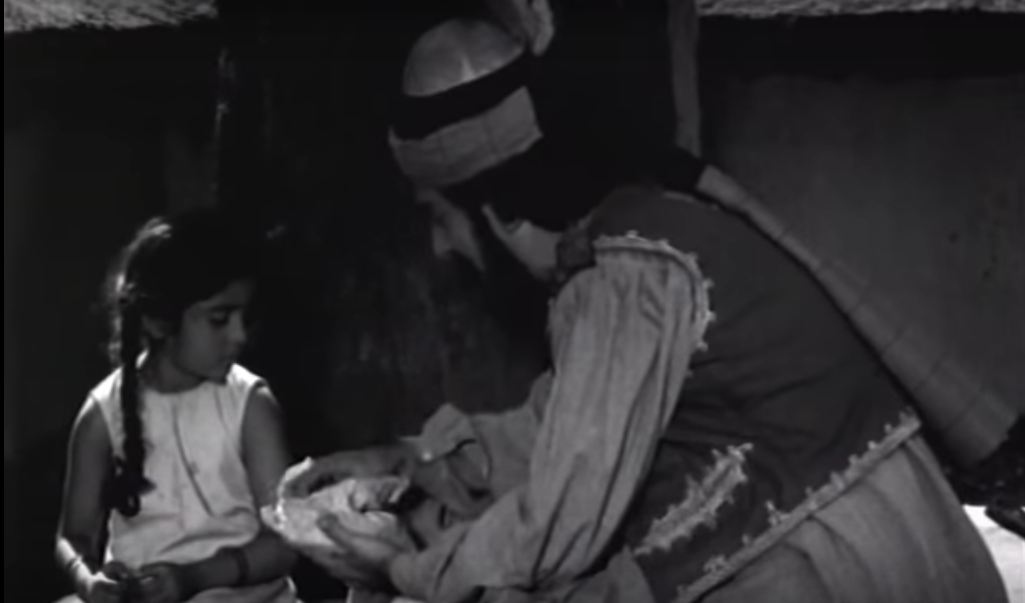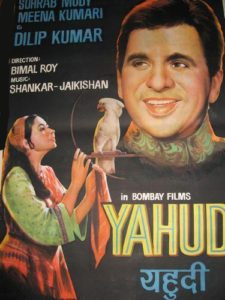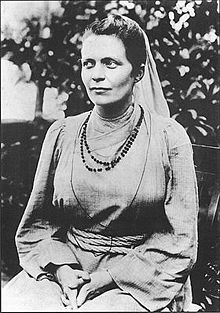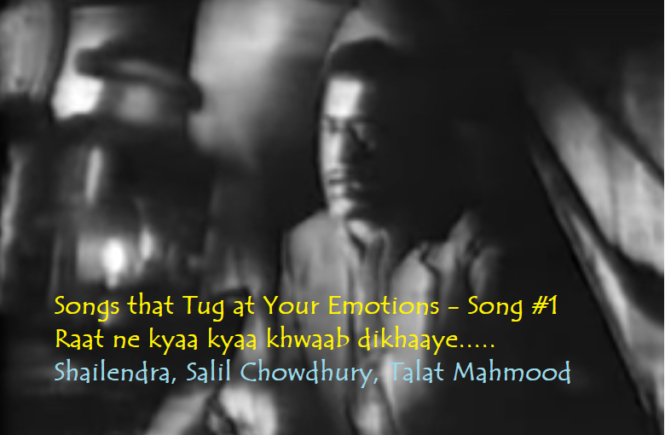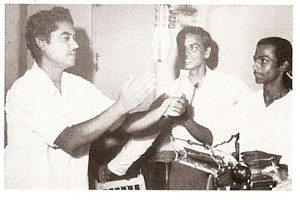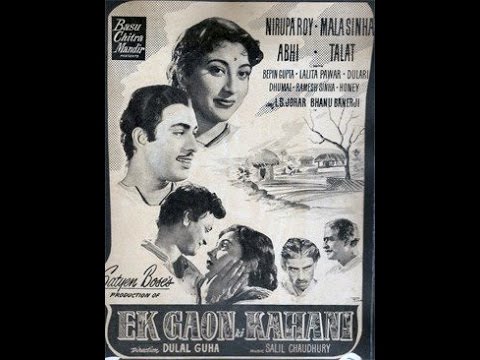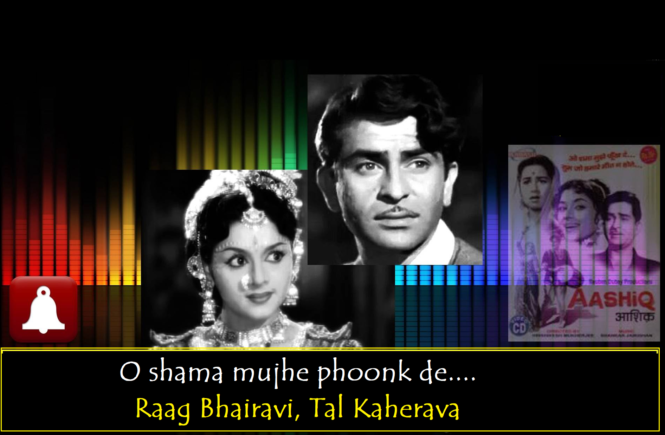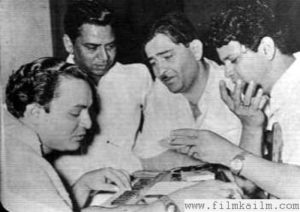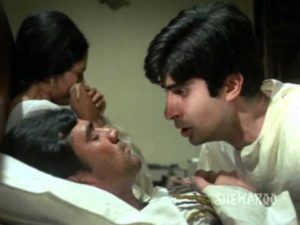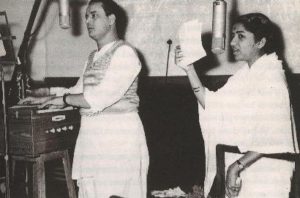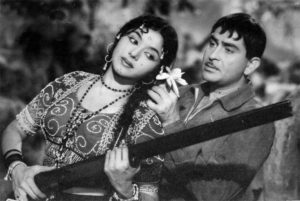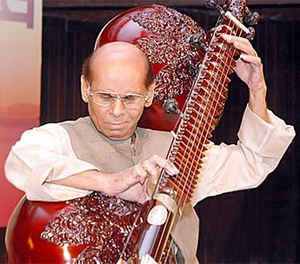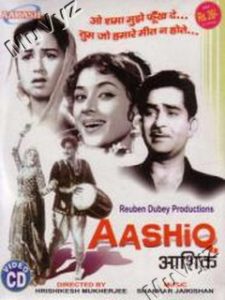Raaga Based Song of the Day: Jaane kyun log pyaar karte hain ….
Raag Nattakurinji, Tal Kaherava
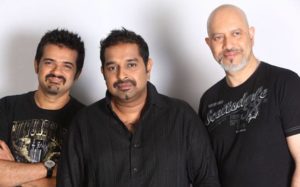
A new raag tonight and that too from Carnatic Music. The song in this raag is composed by Shankar-Ehsaan-Loy, also known as S-E-L, standing for the Composer Group of Shankar Mahadevan, Ehsaan Noorani and Loy Mendosa; Shankar Mahadevan is the vocalist, Ehsaan Noorani is the lead guitarist and Loy Mendosa is a multi-instrumentalist who plays the piano, bass guitar, harmonica and is currently learning to play the trumpet. Their first big break was in the 2001 movie Dil Chahta Hai, the debut movie of Farhan Akhtar as a director. They happened to be the music director for the movie because AR Rehman, who was the first choice, had to back out due to other engagements. They are recipients of three Filmfare Awards and one National Award (for Kal Ho Na Ho) besides a host of other awards.
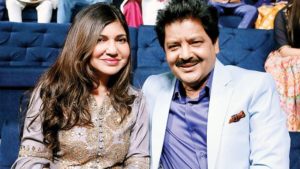
A word about the singers: Udit Narayan and Alka Yagnik. Udit Narayan Jha was born on 01 Dec 1955 and has been the recipient of three National Awards and Five Fimfare Awards. He started singing in the Hindi movies in 1980 and hence is the only male singer who has won Filmfare Awards over three decades of singing. Alka Yagnik is over 10 years younger, having been born on 20th Mar 1966. She has a record of winning seven Filmfare Awards from 36 nominations and two National Awards. Incidentally, this song got Udit Narayan a National Award.
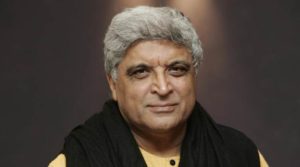
The song’s lyrics were penned by Javed Akhtar. Javed Akhtar, born on 17 Jan 1945, is the son of noted lyricist and poet Jan Nisar Akhtar. He is the recipient of five National Awards, six Filmfare Awards, Padma Shri and Padma Bhushan.
We have completed eighty-one days of Raaga Based Songs of the Day. Our first post in the series was titled ‘Raaga Based Song Of The Day #1’ and the song was a Mohammad Rafi and Lata Mangeshkar song from the 1970 Shakti Samanta movie Pagla Kahin Ka: Tum mujhe youn bhula na paoge. It is in Raag Jhinjhoti, Tal Kaherava.
Our eighty-first post or the last post was titled ‘Raaga Based Song Of The Day #81‘ and the song was a Mukesh and Lata Mangeshkar song from the 1962 Hrishikesh Mukherjee movie Aashiq starring Raj Kapoor, Nanda and Padmini: O shama mujhe phoonk de. It is in Raag Bhairavi, Tal Kaherava.
This blog has a number of posts on Raaga based songs in Hindi movies titled similarly; for example: ‘The Best Raaga Based Songs in Hindi Movies – Raaga Darbari Kanada – Part III‘.
In the last eighty-one days of sharing Raaga based songs of the day, I have given you songs based on Raag Jhinjhoti, Gara, Bhimpalasi, Madhuvanti, Shivaranjani, Bihag, Pahadi, Sarang, Pilu, Bhairavi, Khammaj, Charukesi, Kalyan or Yaman, Desh, Malgunji, Kirwani, Kedar, Bageshri, Megh Malhar, Bhupali, Ahir Bhairav, Malkaush, Mand, Adana, Kafi, Rageshri, Jaunpuri, Tilang, Janasammohini, Chayanat, Shuddha Kalyan, Gaur Sarang, Jogiya, Asavari, Maru Bihag, Durga, Lalit, Puria Dhanashri, Bhinna Sahdja, Sohani, Multani, Patdeep, Jaijaiwanti, Tilak Kamod, Hemant, Basant Mukhari, Gujri Todi, Kalavati, Hamir, Bhatiyar, Gawati, Shyam Kalyan, Gorakh Kalyan, Madhamat Sarang, Manj Khammaj, Darbari Kanada, Vibhas, Shankara, Bahar, Nand and Mian Ki Malhar; making it a total of 61 raagas. The raagas that have been repeated so far are Pahadi, the raaga of my home place in the Himalayas, Maru Bihag, Raag Kirwani, Jhinjhoti, Bhairavi, Gara, Basant Mukhari, Malkauns, Bhairavi and Mand. Today, I am giving you a new raaga: Nattakurinji.
Today’s song has been sung by Udit Narayan and Alka Yagnik on the lyrics of Javed Akhtar and composition by Shankar-Ehsaan-Loy. As I said, it is in Raag Nattakurinji, Tal Kaherava. The song is picturised on Aamir Khan and Preity Zinta in the 2001 Farhan Akhtar debut movie Dil Chahata Hai. A word about the movie and its principal actor: Aamir Khan.
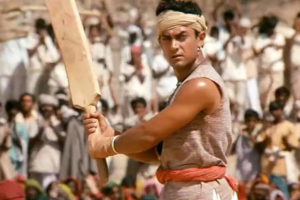
Lets first take up Aamir Khan, the actor, producer and director, besides a figure for humanitarian causes. In everything that he puts his hands to, Aamir Khan is known as a perfectionist. Unlike other contemporary actors and stars, Aamir Khan gets into the soul of the role that he takes up and is choosy about quality more than quantity. Take the year 2001, for example; Aamir Khan’s own production and an Ashutosh Gowariker movie Lagaan was released that year and he played a rustic hero with excellent leadership qualities who got his village out of paying lagaan (tax) to the British after winning a game of cricket with them, a game they had never played before. He was so convincing in his role as the village-boy Bhuvan that no one expected him to switch to an urbane role as Akash Malhotra in his second movie of the same year: Dil Chahta Hai. One has to imagine that there must have been occasions when the shooting of the movies would have been near concurrent and Aamir Khan had to shift from rustic to urbane.
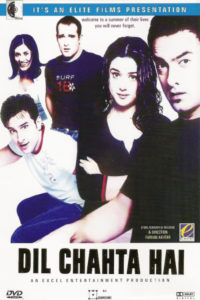 Lets get to the movie: Dil Chahta Hai. It was the debut directorial venture by Farhan Khan who wrote the story and the screenplay too. The movie was about three childhood friends, Akash Malhotra (Aamir Khan), Sameer Mulchandani (Saif Ali Khan), and Siddharth “Sid” Sinha (Akshaye Khanna). Akash didn’t believe in the concept of love and hence this song that I have chosen for you is so appropriate with Preity Zinta bringing out the benefits of love and Aamir Khan denying them fervently. The movie won seven Filmfare Awards, two National Awards and four IIFA awards. If you now consider the awards won by Lagaan, these are: eight National Awards, nine Filmfare Awards, nine Screen Awards and ten IIFA Awards. This would mean that these two movies in 2001 carried a bulk of awards that year.
Lets get to the movie: Dil Chahta Hai. It was the debut directorial venture by Farhan Khan who wrote the story and the screenplay too. The movie was about three childhood friends, Akash Malhotra (Aamir Khan), Sameer Mulchandani (Saif Ali Khan), and Siddharth “Sid” Sinha (Akshaye Khanna). Akash didn’t believe in the concept of love and hence this song that I have chosen for you is so appropriate with Preity Zinta bringing out the benefits of love and Aamir Khan denying them fervently. The movie won seven Filmfare Awards, two National Awards and four IIFA awards. If you now consider the awards won by Lagaan, these are: eight National Awards, nine Filmfare Awards, nine Screen Awards and ten IIFA Awards. This would mean that these two movies in 2001 carried a bulk of awards that year.
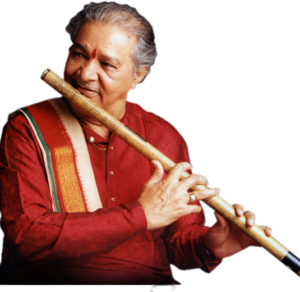 Before we actually take up the song, first, lets take up the value added learning of today. From the last time onwards we started learning about some of the leading personalities in Indian Classical Music or Shastriya Sangeet. The first one that we took up was Ustaad Asad Ali Khan, the finest Rudra Veena player in the country. Tonight, lets talk about Pandit Hariprasad Chaurasia, the greatest living flautist (Bansuri player) in the country.
Before we actually take up the song, first, lets take up the value added learning of today. From the last time onwards we started learning about some of the leading personalities in Indian Classical Music or Shastriya Sangeet. The first one that we took up was Ustaad Asad Ali Khan, the finest Rudra Veena player in the country. Tonight, lets talk about Pandit Hariprasad Chaurasia, the greatest living flautist (Bansuri player) in the country.
You would recall I told you about Bansuri when I was covering Hindustani Musical instruments (Please see ‘Raaga Based Song Of The Day #46‘). Indians have a natural fascination towards Bansuri, the instrument played magically by our most loved Lord Krishna. Even at that time I briefly covered Padma Vibhushan Hariprasad Chaurasia. I recall, on 21 Dec 2013, when NDTV had the President honour 25 Living Legends (on the occasion of NDTV completing 25 years of broadcasting), Pandit Hariprasad Chaurasia was one of them. His father wanted him to become a wrestler. Hence, he had to learn music without the knowledge of his father (his mother died when he was only 6).
Chaurasia started learning vocal music from his neighbour, Pandit Rajaram, at the age of 15. Later, he switched to playing the flute under the tutelage of Pandit Bholanath Prasanna of Varanasi for eight years. He joined the All India Radio, Cuttack, Odisha in 1957 and worked as a composer and performer. Pandit Hariprasad Chaurasia composed music for Hindi films along with Pt. Shivkumar Sharma, forming a music duo called Shiv-Hari. Coincidentally, today, on the first birth anniversary of actor Vinod Khanna after his demise on 27 April 2017, I gave in my Facebook Group ‘Yaad Kiya Dil Ne’ one of their songs: Lagi aaj sawan ki phir woh jhadi hai penned by Anand Bakshi.
Pandit ji received many awards in his career. The first important one was the Sangeet Natak Akademi Award in 1984. It was followed by Padma Bhushan in 1992 and finally Padma Vibhushan in 2000.
As I said, today’s song is in Raag Nattakurinji, Tal Kaherava.
Raag Nattakurinji is a raaga of Carnatic Music. It is an audhava janya raaga of 28th Melakarta raaga Harikambhoji. This gentle raaga evokes devotion and compassion, ie, the raaga is most suited to bring about Karuna and Sringara Rasa. A pleasant raga, its phrases are very graceful and when handled tastefully, this raga can be quite a treat. Mostly suited for singing in the evenings, it is actually a rakti raaga, ie, can be sung at any time. Natakurinji is easily identifiable owing to its unique Aarohana-Avarohana pattern:
Aarohana (Ascending) : S R2 G3 M1 N2 D2 N2 P D2 N2 S’
Avarohanam (Descending) : S’ N2 D2 M1 G3 M1 P G3 R2 S
Natakurinji is a relatively recent raga. There is no reference to this raaga in pre-18th century literature. The name of the raaga suggests that the origins of this raaga are in the music of the early Tamils; which is not really correct.
In film music, Natakurinji songs are just a few, noteworthy and full of bhava. The convoluted patterns in the raga often scare off film composers from touching upon it. Those brave enough to handle it have done so admirably. Shankar-Ehsaan-Loy are an exception in Hindi movies, as far as this raag is concerned.
The song Jaane kyun log pyaar karte hain is from the 2001 Farhan Akhtar directorial movie Dil Chahta Hai. Other songs of the movie penned by Javed Akhtar and composed by Shankar Ehsaan Loy are:
| 1. | “Dil Chahta Hai” | Shankar Mahadevan, Clinton Cerejo | 5:11 |
| 2. | “Jaane Kyon” | Udit Narayan, Alka Yagnik, Caralisa Monteiro | 4:49 |
| 3. | “Woh Ladki Hai Kahan” | Shaan, Kavita Krishnamurthy | 5:06 |
| 4. | “Kaisi Hai Yeh Ruth” | Srinivas | 5:29 |
| 5. | “Koi Kahe Kehta Rahe” | Shankar Mahadevan, Shaan, KK | 5:46 |
| 6. | “Akash’s Love Theme” | Michael Harvey | 2:10 |
| 7. | “Tanhayee” | Sonu Nigam | 6:10 |
| 8. | “Dil Chahta Hai (Reprise)” | Shankar Mahadevan, Clinton Cerejo | 4:18 |
| 9. | “Rocking Goa” | Chorus | 2:06 |
Please enjoy in Raag Nattakurinji, Tal Kaherava: Jaane kyun log pyaar karte hain ….
Jaane kyuu.N log pyaar karate hai.n
Jaane kyuu.N vo kisii pe marate hai.n
Jaane kyuu.N
Pyaar me.n sochi_e to bas gam hai
Pyaar me.n jo sitam bhii ho kam hai
Pyaar me.n sar jhukaanaa pa.Dataa hai
Dard me.n muskuraanaa pa.Dataa hai
Zahar kyuu.N zi.ndagii me.n bharate hai.n
Jaane kyuu.N vo kisii pe marate hai.n
Jaane kyuu.N
Pyaar bin jiine.n me.n rakhaa kyaa hai
Pyaar jis ko nahii.n vo tanhaa hai
Pyaar sau ra.ng le ke aataa hai
Pyaar hii zi.ndagii sajaataa hai
Log chhup chhup ke pyaar karate hai.n
Jaane.n kyuu.N saaf kahate Darate hai.n
Jaane kyuu.N
Pyaar bekaar kii musiibat hai
Pyaar har tarah khuubasuurat hai
Ho pyaar se ham duur hii achchhe
Are pyaar ke sab ruup hai.n sachche
Ho pyaar ke ghaaT jo utarate hai.n
Duubate hai.n na vo ubharate hai.n
Jaane kyuu.N
Pyaar to khair sabhii karate hai.n
Jaane kyuu.N aap hii mukarate hai.n
Jaane kyuu.N
We have intended to learn about Raaga based music whilst we entertain ourselves with Raaga based songs. So, lets, once again, take stock of our collective learning so far:
- On the first day we learnt about the Raaga system devised by Pandit Vishnu Narayan Bhatkhande, which is the prevalent system in Hindustani Classical Music and based on ten Thaats.
- On the second day we learnt about Tal or Taal.
- On the third day we learnt about characteristics of Raagas that included Swar, Jati, Thaat, Arohana and Avarohana, Vadi, Samvadi and Pakad.
- On the fourth day, we learnt about Sargam.
- On the fifth day, we learnt about notations used in Indian classical music or simply Swar Lipi.
- On the sixth day, we learnt about the Ras (sentiments) that Raagas evoke.
- On the seventh day, we learnt about various types of Swar: Shuddha, Achal, Vikrut, Komal and Teevra.
- On the eighth day, we learnt the parts of a composition in Indian Classical Music.
- On the ninth day, we learnt the names of some of the popular instruments used in Indian Classical Music.
- On the tenth day, we learnt about the sources of names of Raagas.
- On the eleventh day, we learnt about why Bhairavi is the first raag to be taught to beginners and also why it is the last in a performance.
- On the twelfth day, we learnt about Khammaj Thaat.
- On the thirteenth day, we learnt about Tal Punjabi Theka or Sitarkhani.
- On the fourteenth day, we learnt about Alap.
- On the fifteenth day, we learnt about List of Raagas (Raagmala) in my favourite book: Sri Guru Granth Sahib.
- On the sixteenth day, we learnt about tips for raaga identification.
- On the seventeenth day, we learnt the basics of Gharana system.
- On the eighteenth day, we learnt about Filmi Sangeet.
- On the nineteenth day, we learnt about the commonest Tal in Raagas: Tintal.
- On the twentieth day, we learnt about the Kafi Thaat.
- On the twenty-first day, we learnt a little more in detail about the classification of Raagas.
- On the twenty-second day, we learnt the essential differences between Bhairavi and Bhairav.
- On the twenty-third day, we learnt a little more in detail about the Jati or Jaati of a raaga.
- On the twenty-fourth day, we learnt details of Thaat Bilawal, the most basic thaat in the Bhatkhande’s system of raagas.
- On the twenty-fifth day, we learnt about Tintal.
- On the twenty-sixth day, we learnt in detail about the Raaga – Samay linkage.
- On the twenty-seventh day, we learnt about Lehar.
- On the twenty-eighth day, we learnt about the history of the Hindustani Music.
- On the twenty-ninth day, we learnt about Dhrupad.
- On the thirtieth day, we learnt about Rupaktal that I was introduced to, a few months back, by my friend Anand Desai.
- On the thirty-first day, we learnt about Khayal.
- On the thirty-second day, we learnt about Thumri.
- On the thirty-third day, we learnt about Tappa.
- On the thirty-fourth day, we learnt about Tarana.
- On the thirty-fifth day, we learnt about Tal Dipchandi (Moghali).
- On the thirty-sixth day, we learnt about Tabla.
- On the thirty-seventh day, we learnt about Kirtan.
- On the thirty-eighth day, we learnt about Pakhawaj.
- On the thirty-ninth day, we learnt about Hori.
- On the fortieth day, we learnt about Dadra.
- On the forty-first day, we learnt about Kajri.
- On the forty-second day, we learnt about Chaiti.
- On the forty-third day, we learnt about Sarangi.
- On the forty-fourth day, we learnt about Shehnai.
- On the forty-fifth day, we learnt about Sarod.
- On the forty-sixth day, we learnt about Bansuri.
- On the forty-seventh day, we learnt about Ektal and Tanpura.
- On the forty-eighth day, we learnt about Veena.
- On the forty-ninth day, we repeated our learning of Veena with a small excitement added.
- On the fiftieth day, we learnt about Dilruba/Esraj.
- On the fifty-first day, we learnt about Jaltarang.
- On the fifty-second day we learnt about Qawwali.
- On the fifty-third day, we learnt about Sitar.
- On the fifty-fourth day, we learnt about Surbahar.
- On the fifty-fifth day, we learnt about Harmonium.
- On the fifty-sixth day, we learnt about Santoor.
- On the fifty-seventh day, we learnt about Swarmandal.
- On the fifty-eighth day, we learnt about the Shruti Box.
- On the fifty-ninth day, we learnt about Alankar.
- On the sixtieth day, we learnt about singing in Aakaar.
- On the sixty-first day, we learnt about the Classification of Indian Musical Instruments.
- On the sixty-second day, we learnt a little about Carnatic Music.
- On the sixty-third day, we learnt about Natya Shastra.
- On the sixty-fourth day, we learnt about evolution of musical instruments in India down the ages.
- On the sixty-fifth day, we learnt about Riyaaz.
- On the sixty-sixth day, we looked at a list of Raagas in Hindustani Classical Music.
- On the sixty-seventh day, we learnt about the health benefits of raagas.
- On the sixty-eighth day, we learnt a little more comprehensively about the moods and emotions that raagas evoke.
- On the sixty-ninth day, we learnt about a mobile application to help identify raagas.
- On the seventieth day, we learnt about Melakarta Raagas.
- On the seventy-first day, we learnt about Sangita Makarand.
- On the seventy-second day, we learnt about TaalMala an Android application for personalized accompaniment of musical instruments during Riyaaz or even during Concert.
- On the seventy-third day, we learnt about Indian Classical Ragas, an Android application for mobile phones.
- On the seventy-fourth day, we learnt about Saregama Classical, another application for Classical Raagas.
- On the seventy-fifth day, we learnt about a free online service available to learn Indian Classical Music.
- On the seventy-sixth day, we learnt about List of Hindustani Classical Musical Festivals in India and Abroad.
- On the seventy-seventh day, we learnt about List of Carnatic Musical Festivals in India and Abroad.
- On the seventy-eighth day, we learnt about Jhaptal.
- On the seventy-ninth day, we learnt about Ektal.
- On the eightieth day, we learnt about Tivra Tal.
- On the eighty-first day, we learnt about the greatest Rudra Veena player ever: Ustaad Asad Ali Khan.
- And today, on the eighty-second day, we learnt about the greatest Bansuri player alive: Pandit Hariprasad Chaurasia.
There is much more still to be learnt and enjoyed.
Please stay tuned!
